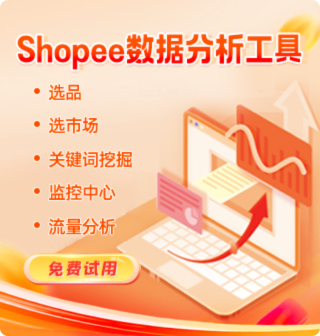-
用户156****2604
Shopee Traffic: Analyzing and Leveraging User Flow for E-Commerce Success
Shopee has established itself as one of the leading e-commerce platforms in Southeast Asia, catering to millions of users daily. A critical factor behind Shopee’s continued dominance is its ability to generate, manage, and convert massive amounts of traffic — the volume of visitors and interactions on its platform. Understanding Shopee traffic is essential not only for the platform itself but also for sellers and marketers striving to maximize sales and growth.
This article provides an in-depth analysis of Shopee traffic: its sources, characteristics, and actionable insights for leveraging it to boost e-commerce performance.
1. What is Shopee Traffic?
Shopee traffic refers to the overall flow of users visiting the Shopee platform, including both the website and mobile app. It encompasses:
Organic Visitors: Users coming from search engines, direct visits, or organic app discovery.
Paid Traffic: Visitors attracted through advertisements, such as social media ads, Google Ads, or influencer marketing.
Referral Traffic: Users directed from other websites, social media, or affiliate links.
Internal Traffic: Shoppers navigating within the Shopee ecosystem, including from promotional banners, notifications, or campaigns.
This traffic is a key performance indicator (KPI) reflecting Shopee’s popularity, marketing effectiveness, and user engagement.
2. Major Sources of Shopee Traffic
Mobile App: The majority of Shopee’s traffic comes from its mobile app, given the smartphone penetration in Southeast Asia. The app’s UX optimization and push notifications help maintain daily active user rates.
Search Engines: SEO efforts and content marketing contribute to organic search traffic, often targeting keywords like “cheap electronics,” “fashion deals,” or “Shopee voucher.”
Social Media: Platforms like Facebook, Instagram, TikTok, and YouTube are vital for driving referral traffic through ads, influencer collaborations, and user-generated content.
Shopee Campaigns: Mega sales events (e.g., 9.9, 11.11, 12.12) generate spikes in traffic via email marketing, app notifications, and homepage promotions.
Affiliate Networks: Affiliates and bloggers drive traffic by sharing product links and discount codes.
3. Characteristics and Patterns of Shopee Traffic
Seasonal Spikes: Traffic surges heavily during festival seasons, public holidays, and Shopee’s mega sales.
Mobile-Dominant: Over 80% of Shopee’s traffic is mobile-based, emphasizing speed and mobile-friendly design.
High Conversion Intent: Unlike general browsing traffic, Shopee visitors often have a high intent to purchase due to targeted marketing and native shopping environment.
Multi-Channel Interaction: Users frequently navigate across platforms—starting from social media, moving to search, and finalizing on Shopee’s app or website.
4. How Shopee Manages and Optimizes Traffic
Load Balancing and CDN: To handle millions of simultaneous visitors, Shopee employs load balancers and Content Delivery Networks (CDNs) that distribute traffic globally, ensuring fast page loading times and reducing downtime risks during peak periods.
Personalization Engines: Shopee’s backend uses AI algorithms to tailor product recommendations and promotions based on user behavior, increasing engagement and average order value.
A/B Testing: Continuous experimentation on UI elements, promotional placements, and campaigns helps optimize conversion rates.
Search Optimization: Shopee invests in robust search infrastructure that quickly returns relevant product results, improving user satisfaction and retention.
Fraud and Bot Detection: Traffic quality is monitored to detect and block malicious bots which can skew analytics and impact system resources.
5. Practical Tips for Sellers to Capture and Convert Shopee Traffic
Optimize Store and Product Listings: High-quality images, clear descriptions, and keyword-rich titles improve visibility in Shopee’s internal search and attract more organic traffic.
Participate in Shopee Campaigns: Listing products in official campaigns exposes sellers to larger pools of active shoppers, increasing traffic to their product pages.
Leverage Shopee Ads: Paid advertising within Shopee, such as Search Ads or Discovery Ads, can drive targeted traffic to specific listings or stores.
Engage with Shopee Live: Hosting live streams can create direct interaction with potential buyers, boosting both traffic and conversion.
Encourage Reviews and Ratings: Positive user feedback enhances product credibility and indirectly attracts more traffic through improved search rankings.
6. Measuring and Interpreting Shopee Traffic Data
Traffic Volume: Total visits provide a broad measure but need to be segmented by source for better insights.
Conversion Rate: The percentage of visitors making purchases is crucial to evaluating the quality of traffic.
Bounce Rate: A high bounce rate might indicate poor product relevance or page performance issues.
Average Session Duration: Longer sessions often correlate with deeper user engagement.
Repeat Visits: Returning visitors are valuable for sustained growth.
Sellers and marketers should use Shopee’s Seller Center analytics, Google Analytics, and third-party tools to monitor these metrics and adjust strategies accordingly.
7. Challenges and Considerations in Managing Shopee Traffic
Competitive Saturation: High traffic means sellers must differentiate themselves amid intense competition.
Traffic Quality over Quantity: Focusing on attracting the right target audience improves ROI better than merely increasing visitor numbers.
Technical Bottlenecks: Poorly optimized product pages or slow loading can lead to lost traffic and sales.
Ad Fraud and Click Spam: Sellers need to monitor ad campaigns vigilantly to avoid wasting budgets on invalid traffic.
Conclusion
Shopee traffic is the lifeblood of the platform’s thriving e-commerce ecosystem. Its diverse sources, mobile-centric nature, and high conversion intent offer rich opportunities for businesses to scale if leveraged strategically.
By understanding the dynamics of Shopee traffic, sellers can optimize listings, harness promotional tools, and deliver engaging experiences that convert visitors into loyal customers. Meanwhile, Shopee’s continuous investments in technology and personalization ensure that user flow remains smooth, relevant, and secure.
In the fast-evolving online marketplace, mastering Shopee traffic management is a prerequisite for sustained success and growth.

